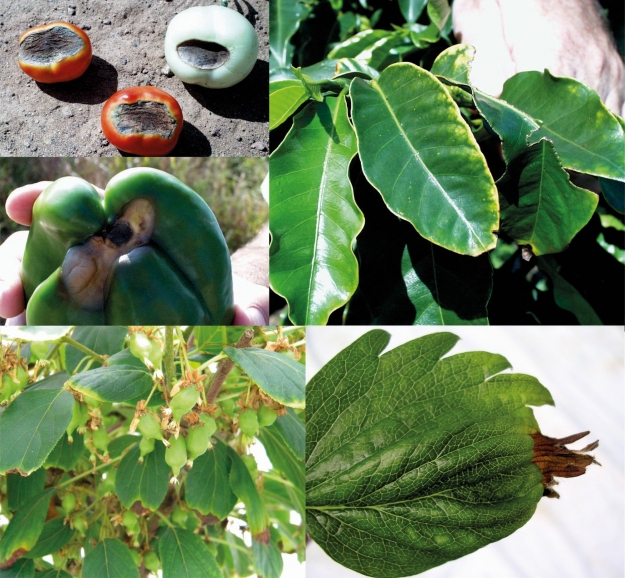You are here
Better fruits with more mobile calcium

Calcium is essential for all kinds of fruits: apples, tomatoes, kiwis, pears ... However, we often encounter a deficiency and this has its consequences.
- a poorer quality of the fruit during storage
- serious deformations such as bitter pit, blossom end rot and soft fruits.
To overcome a calcium deficiency, we address the causes. Let’s have a look at them.
What are the causes of a calcium deficiency?
-
Calcium is immobile within the plant
Calcium mainly follows the upward sap stream or xylem flow: it is absorbed by the roots and moves passively to the plant parts that transpire the most. These are mainly the leaves.
Transpiration and the leaf/fruit ratio determine the calcium content in the fruits.
- High humidity, in for example greenhouses, will reduce plant transpiration, which means that less calcium will reach the fruits.
- Drought has the same effect: the plant transpires less and absorbs less water.
In both cases less xylem reaches the fruits carrying also less calcium towards them keeping the calcium concentration low.
-
Excessive nitrogen fertilization
Vigorous plants or trees, for example due to excessive nitrogen fertilization, produce more leaves. These leaves transpire more of the absorbed water so that there is proportionately less calcium arriving in the fruits.
-
The impact of other nutrients
There are some nutrients that influence a good calcium concentration in the fruits.
- Boron, for example, influences the permeability of the cell walls, facilitating the distribution of numerous nutrients in the plant, including calcium.
- Also the ratio between the cations calcium, potassium, magnesium, ammonium and sodium is important.
- Prevails the presence of potassium or magnesium in the soil, due to heavy fertilization, then these elements will displaces the calcium and reduces its absorption.
- In the same way sodium, in saline soils, can displace the calcium
- Fertilizers rich in ammonium also increase the risk of calcium deficiency.
These are the basic conditions for preventing a calcium deficiency
- avoid excessive nitrogen and potassium fertilization
- provide a balanced plant nutrition including also boron
- ensure optimum water supply and ventilation in the greenhouses
These are essential measures, but often not enough. Sometimes you meet all the conditions and you still struggle with a deficiency. Foliar nutrition can play an important role at this point.
Calcium chelate as a lifesaver
Foliar applied calcium prevents and cures a calcium deficiency. Why foliar nutrition?
- If you apply calcium through the leaf, you avoid the poor root absorption.
Use foliar nutrition with a calcium chelate, such as Chelal Omnical. Why a chelate?
- This makes calcium mobile so that it also ends up effectively in the fruits.
- Calcium nitrate, ie calcium in the form of a salt, is not mobile because calcium precipitates due to the presence of phosphates and oxalates in the downward sap stream or the phloem.
The calcium in Chelal Omnical is chelated and therefore remains mobile, also in the downward sap stream that feeds the fruits.
Let’s put our findings to the test: foliar calcium nutrition on tomatoes
Research into foliar applications on the tomato plant shows that calcium chelate is mobile within the plant. In this test we only treated the upper leaves of the tomato plant with a foliar spray. Plant sap analysis measure the actual absorption of a nutrient quickly and accurately. These analysis show that the calcium content in the juice of the lower leaves is higher, even though we only treated the upper leaves of the tomato plant. More details of this test can be found on our trial field page.
In summary
- Calcium deficiency is a real problem.
- Calcium deficiency is often due to poor the absorption from the soil and poor transfer towards the fruits.
- This can be solved with foliar calcium nutrition in the form of chelate. Your advantage?
- good and longer shelf life of the fruits
- harder fruits
- less fruit deformation such as blossom end rot and bitter pit
- Our test on tomatoes proves the good translocation of calcium chelate in the plant.
Discover more benefits of foliar nutrition in this blog post!